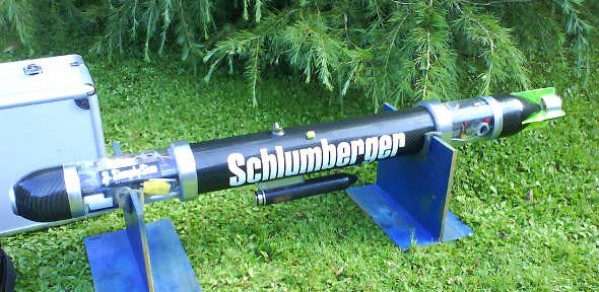
In July 2008 the University of Cambridge Autonomous Underwater Vehicles (CAUV) team competed in the third Student Autonomous Underwater Challenge-European (SAUC-E) competition and won the Award for Innovation in Systems Engineering. The competition challenges university students from across Europe to design and build their own underwater robots and then perform realistic missions in the underwater environment, and by doing so advance Autonomous Underwater Vehicle (AUV) technology.
The best part of the competition is meeting the people from the other teams. There is a fantastic amount of camaraderie between all the teams. Every team was quick to help the other teams by lending the various nuts or bolts that they were missing.
Paul Esparon, Team Captain
The competition encourages young engineers and scientists to think about underwater technology and its future possibilities, as well as fostering ties between the students and the organisations involved in AUV technologies.
The robots that the students build must be able to travel through an underwater assault course consisting of validation gates, submerged buoys, marker dropping targets and surface zones. However, the most impressive aspect of this competition is that the Autonomous Underwater Vehicles, as the robots are known, must complete the task on their own. This means no remote controls and no communication from equipment on the surface. Once the AUV is placed in the water it is on its own and must navigate its way based purely on its own sensors.
The Cambridge AUV team have a much improved robot from their 2007 model, with large thanks to sponsors Schlumberger, Composite Engineering and SimplySim. The entire hull was brand new and custom built including the carbon fibre shell.
The CAUV is 1.1m long and has a 90mm diameter with 4 internal vectored thrusters to provide manoeuvrability and a 100W rear propeller for a maximum speed of around 4.2m/s and a maximum range of 40km at a cruising speed of 2.4m/s. It makes use of the world's smallest full-featured x86 mainboard, the PICO-ITX, to power the autonomy software which guides it through the underwater assault course.
Paul Esparon, team captain said "The best part of the competition is meeting the people from the other teams. There is a fantastic amount of camaraderie between all the teams. Every team was quick to help the other teams by lending the various nuts or bolts that they were missing."
CAUV is a student-run Society of the University of Cambridge and relies on new recruits to keep the project a success. Preparations for the 2009 competition are underway.
Cambridge AUV would like to thank everyone who is involved with the project in one way or another. Particular thanks go to Dr T. Nickels, Alistair Ross, Steve, Professor Peter Wadhams, all the staff at the Department of Engineering, and the teams and organisers of SAUC-E.
The 2008 team was made up of 15 people: Paul Esparon (Team Captain 2008) (4th year), Richard Mathie (4th year), Andy Pritchard (Team Captain 2009) (2nd year), Simon Calcutt (2nd Year), Alex Ridge (2nd Year), Sunil Shah (2nd Year), Lezsek Swirski (2nd year), Alex Nixon (2nd Year), Binh Le (1st year), Thanh Le (1st year), Justin Weng (2nd year), Hiro Funakoshi (3rd year), Jason Wong (post grad), Parmesh Gajjar (2nd year), Arjun Mehta (2nd year).

